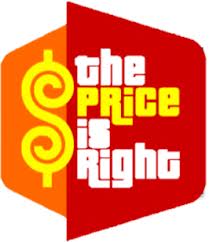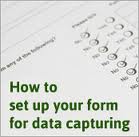We take a cost-based approach to develop a fee for data entry services. The basic steps in our typical production process include the following:
- Document Intake
 Data Entry Turnaround
Data Entry Turnaround- Document Scanning
- Programming
- Data Entry – Key From Image
What follows is a discussion of the factors affecting the cost of each of these steps.
DOCUMENT INTAKE
Document Intake refers to the process of receiving the source documents and preparing them for data processing. How this is done and the amount of document preparation we are required to perform can greatly affect the cost.
The client can scan the documents into PDF and then upload onto the server for us to download for processing. If the client cannot scan the documents by themselves, we can arrange our local contact points to scan the documents for them either onsite or offsite.
DATA ENTRY TURNAROUND TIME
The general rule is the faster the required turnaround time, the higher the fee.
This is to compensate for having to work for staff longer and harder during short periods of time, as well as the added administrative burden to quickly get a job done.
DOCUMENT SCANNING
In most cases, clients send us hard copy forms. When we are using our own system to capture data from the forms, we have found the most efficient method is to key from scanned images.
 The factors affecting scanning cost include:
The factors affecting scanning cost include:
- Document size
This affects throughput. Also, too small or too big cannot be scanned.
- Document uniformity
Are they all the same size? Are there differences in shading?
- Paper type
Is the paper real thin, have a sticker attached?
- Document condition
Poor quality documents will require extra time.
- Document arrangement
To be scanned efficiently, all documents must be right side up and facing the same direction. There can be no staples, paper clips, etc., and the documents must all be flat (unfolded). The cost of document preparation usually exceeds the actual cost of scanning.
- Batch integrity
Can we scan continuously, or do we have to retain client batch integrity?
PROGRAMMING
Once documents have been scanned, the images are imported into our data entry system.  For each project, a “template” is developed within Keyoung’s data entry system, programmed for the specific fields on the form.
For each project, a “template” is developed within Keyoung’s data entry system, programmed for the specific fields on the form.
Each field can be programmed to restrict data entry to acceptable values. Any business rules a client defines for specific fields or forms can be programmed into each template.
The factors affecting the cost of programming include the following:
- Document complexity
Size, number of pages, number of fields per page, number of records per page
- Document uniformity
Is the source document in a single version or multiple versions?
- Edits required
For example, integrating client-provided lookup tables, address correction, etc.
- Format of output file required
Programming is a one-time cost (unless the source document changes) and it will normally be waived for large or ongoing projects.
DATA ENTRY – KEY FROM IMAGE
Using the data entry template developed for a specific project, our data entry operators key the required data from the scanned image.
All work is performed on Keyoung’s production servers. Data entry operator workstations connected to our production server function merely as “dumb terminals”.
All data and images remain on the server. We use a dual-monitor approach to handle source documents in image format. Two monitors are attached to the same workstation while one is used for displaying source image and another is used to display the data input interface. This can not only save printing cost but also increase the source document security level.
The factors affecting the amount of time it will take to process a document, and hence the cost includes the following:
-
- Number of fields to be keyed
 Number of characters in each field
Number of characters in each field- Type of data: Numeric, alpha, alphanumeric
- Form Design: This is often overlooked but can have a huge impact on data entry efficiency and cost:
“Constrained” forms improve legibility and potentially allow for successful hand-print recognition (a constrained form requires that each character be printed in a separate box); Uniformity of document layout: are the fields to be keyed always in the same place? Answers should be standardized using a number or alpha-numeric values and displayed on the form.
- Legibility: handwritten vs. typed; also, using a “constrained” form with each handwritten character printed in a separate box improves legibility; also, the quality of the source document may affect the quality of the scan and hence legibility.
- Required accuracy
Different methods are deployed for different accuracies.
The cost for the data entry is the hardest one to estimate, and most vendors will be reluctant to provide a firm fee quote without seeing an actual source document as the above factors will greatly affect the amount of time.
In addition, issues affecting the document (layout, legibility) and the type of data (numeric vs. alphanumeric) will affect the keying rate (can range from an average of 4,000 keystrokes per hour (KSPH) to 10,000+ KSPH).
One other factor will affect the fee, and that is the size of the project. For large, ongoing projects, we can provide more aggressive pricing than we can for small,
one-time projects.
Because every project is unique, and each client has different goals and objectives, it is not practical to take a ‘cookie-cutter’ approach to data entry pricing.
The only good measure is to let us take a look at your project. That way we can give you a reasonable fee estimate based on the factors discussed above.

